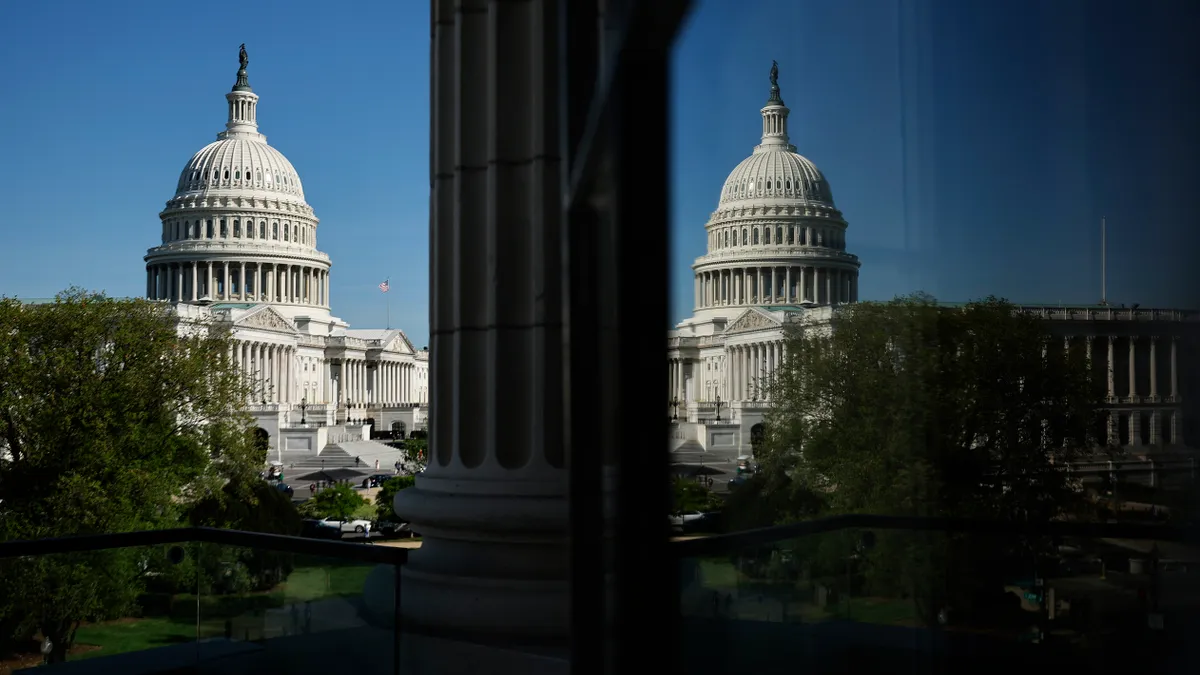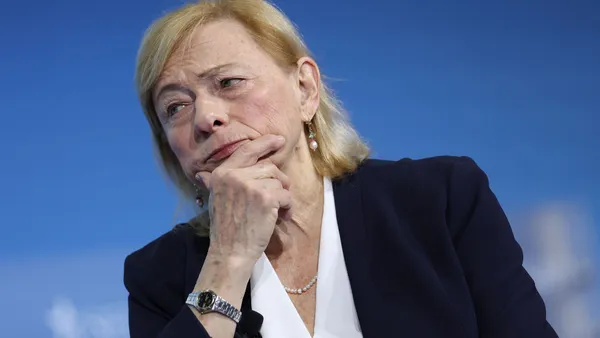Dive Brief:
- The House Ways and Means Committee is suggesting cutting $12 billion in school meal programs over 10 years by adjusting school qualification for the Community Eligibility Provision and requiring income verification for national K-12 breakfast and lunch programs, according to a document on the committee’s budget reconciliation options.
- Specifically, the committee proposed raising the minimum threshold for low-income schools and districts to qualify for CEP, which allows low-income schools to serve free meals to all students. To participate in the program, 25% of students enrolled in a school have to be certified as eligible for free school meals. The House proposal calls for a 60% threshold.
- The proposal would strip away 24,000 schools’ ability to participate in CEP, impacting over 12 million children, according to the Food Research & Action Center, a nonprofit anti-hunger advocacy group.
Dive Insight:
The suggested cuts offer an early glimpse into House Republicans’ priorities for school nutrition policy.
A rollback in school eligibility for the provision is being proposed just as Project 2025, a conservative policy blueprint from the Heritage Foundation, has called for the elimination of CEP altogether. The policy agenda developed in conjunction with some former Trump administration officials also recommended the U.S. Department of Agriculture, which oversees CEP, work with lawmakers to curb any efforts in support of universal school meal programs.
The federal school lunch and breakfast programs “should be directed to serve children in need, not become an entitlement for students from middle- and upper-income homes,” Project 2025 said.
The committee’s proposals have been released ahead of an expected budget reconciliation, which is part of a special legislative process to fast-track high-priority fiscal legislation that adjusts laws regarding spending, revenues, deficits or the debt limit.
Reconciliation bills cannot be filibustered in the Senate, “giving this process real advantages for enacting controversial budget and tax measures,” according to the nonpartisan research nonprofit Center on Budget and Policy Priorities. To pass, these bills only need a simple majority in the Senate rather than 60 votes and don't require the president’s signature.
The committee’s move also comes at a time when CEP participation has climbed in recent years, most recently rising 19% during the 2023-24 school year.
As of last school year, half of all schools in the National School Lunch Program were using the provision to serve free meals to all students, according to a January FRAC report.
“Taking away this important and effective way for local schools to offer breakfast and lunch at no charge to all of their students would increase hunger in the classroom, reintroduce unnecessary paperwork for families and schools, increase school meal debt, and bring stigma back into the cafeteria,” FRAC said in a Jan. 17 statement.
Unpaid school meal debt has continued to increase for nearly a decade, according to a January report from the School Nutrition Association. In fact, the median unpaid school meal debt was $6,900 per district nationwide in 2024 — a 26% rise from the previous year.
When pandemic-era waivers ended in 2022 for a temporary universal school meal policy nationwide, some schools took on more meal debt.
Meanwhile, eight states have established their own universal meal programs in lieu of federal action, according to FRAC. Other states leaders are eyeing similar measures this year, including in Alaska, Missouri, Oregon, and New York.








 Dive Awards
Dive Awards







